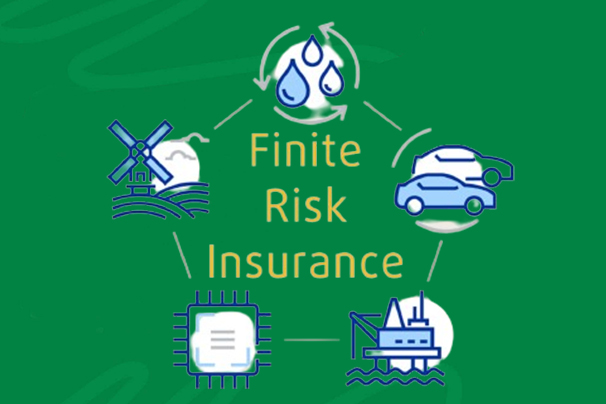Finite-risk insurance emerges as a strategic keystone for companies aiming to tailor their risk management practices with precision and foresight. This form of insurance transcends the traditional boundaries of risk transfer, offering a hybrid model that incorporates elements of financial risk management with the protective cushion of insurance.

By delving into the mechanics and advantages of finite risk insurance, businesses can unlock a nuanced understanding of how to navigate financial uncertainties with greater agility and confidence. This innovative approach not only mitigates risks but also paves the way for more predictable financial planning and improved resource allocation.
What is Finite-Risk Insurance?
Finite risk insurance, at its core, is a fascinating hybrid, a blend of traditional insurance and financial risk management strategies tailored for those who seek a more predictable risk landscape. Also, this innovative approach to managing risk combines the assurance of coverage with the strategic foresight of financial planning, creating a bespoke solution for those navigating the complex currents of business uncertainties.
How Does it Work?
Before diving directly into its workings, it is essential to understand that finite-risk insurance is not a one-size-fits-all solution. It is more similar to a finely tailored suit, designed and stitched to fit the unique contours of each business’s risk exposure.
At its heart, this insurance involves the transfer of risk from the insured to the insurer, much like traditional insurance. However, it distinguishes itself by also incorporating elements of risk financing.
Premiums are paid over the contract period, and if claims are less than expected, the insured may receive a portion of the premiums back. Thus, it is a dance between the insurer and the insured, where risk is not just transferred but managed with a keen eye on financial outcomes.
What Does It Cover?
Listed below are some of the coverages that finite-risk insurance typically includes:
- Specific business risks.
- Liability Management.
- Also, Credit Risk.
- Currency and interest rate fluctuations.
- Lastly, Catastrophic Events.
What Does It Not Cover?
Finite-risk insurance, with its concealed nature, also has its exclusions, typically not covering:
- Predictable, frequent losses.
- Speculative Risks.
- Intentional acts or gross negligence.
How Much Does Finite-Risk Insurance Cost?
The cost of finite-risk insurance is as concealed as the coverage it offers. Its premiums are decided based on a thorough assessment of the insured’s risk profile, historical loss data, and the scope of coverage they are searching for. The structure of the deal, including the length of the coverage period and any profit-sharing arrangements, also plays a critical role in determining the cost.
How to Get Finite-Risk Insurance
To secure finite risk insurance, organizations typically follow a structured approach, which can be distilled into the following key steps:
- Risk Assessment.
- Consultation with a specialist.
- Also, proposal and negotiation.
- Customization of the Policy.
- Lastly, implementation.
Risk Management
This initial phase involves a thorough analysis of the company’s risk profile. It is about identifying and quantifying both the obvious and the subtle risks that the business faces, which could range from operational to financial uncertainties. Understanding the specific risks your business needs to manage sets a solid foundation for seeking out the most appropriate finite-risk insurance solution.
Consultation with a Specialist
This is a niche and complex product, which makes it essential to engage with brokers or consultants who specialize in this field. These professionals can offer invaluable insights into the market, guide you through the available options, and help identify the best insurers to meet your specific needs. Also, their expertise is crucial in navigating the intricacies of this insurance.
Proposal and Negotiation
Based on the insights gained from your risk assessment and the guidance of your consultant, you will receive a proposal from potential insurers. This proposal outlines the terms of the coverage, including premiums, coverage limits, and any conditions or exclusions. In addition, negotiation is a key step, as it allows you to refine these terms to better align with your risk management goals and financial objectives.
Customization of the Policy
After negotiations, the policy can be customized further to precisely fit your requirements. This might involve adjusting the coverage scope, tweaking the premium payment structure, or incorporating specific clauses that address your unique risk scenarios. The goal is to ensure that the policy offers the protection you need without unnecessary extras.
Implementation
With the policy terms finalized, the last step is to officially implement the coverage. This marks the commencement of your finite risk insurance coverage, signaling the beginning of a more predictable risk management journey. It is important to maintain open communication with your insurer and periodically review the policy to ensure it continues to meet your business’s evolving needs.
Final Thoughts
By following these steps, organizations can effectively navigate the process of obtaining finite risk insurance, securing a tailored solution that addresses their unique risk management challenges.
